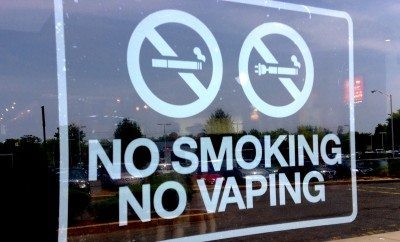
News
Efforts to Reform Sex Trafficking Moving in the Right Direction With Specialized Courts
Should a sexually abused minor be considered a criminal? This question is recently coming to the attention of the American justice system. Courts are now conscious of a new demographic within the legal system and are attempting to reform their ways to accommodate those members in need, particularly girls. Girls courts are being implemented around many counties within California, to the preexisting juvenile justice system. The courts are tailoring to the needs of at risk young women, specifically those recruited as child prostitutes, by providing not only judicial guidance but treatment facilities as well.
Statistics revolving around girls involved in criminal actions have recently been skyrocketing in certain counties such as San Mateo, Alameda, and Orange, causing a need for a change in the court system. One specific example of this recognition of at risk population and attempt to reform those involved, is the Alameda County in California. Between the years 1998 and 2007, there was a 45 percent increase in juvenile girls entering the justice system as well as a 49 percent increase for young girls committing non violent offenses. With such an increase in statistics, it was determined that a change was necessary and the Alameda County Girls Court was created.
The specific programs applied by girls courts are meant to aid victims of sexual assault, in combining the justice system with social services. Their focus and activities offered vary between specific courts. For example, the Alameda County Girls Court, provides a group of adults to gain the trust of young girls as well as offers Saturday sessions to discuss topics ranging from the legal system to body image. While this program is centered around young girls involved in sex trafficking, the Girls Courts of Orange County focus specifically on girls who have spent their lives in foster care.
While the Alameda Girls Courts are still relatively new to be measuring the effects of the system, girls courts in other areas have been making promising progress with their juvenile group members. Other girls courts within California have recently proven that they are making a difference, as the Girls of the Orange County program have presented an enhancement in the grades of the girls. Hopefully, the Alameda Courts will follow in close pursuit of this already established program.
The previous judicial system resulted in a cycle of punishment rather than rehabilitation and treatment for the girls. In California, girl prostitutes were continuously adding to their criminal records, although in many areas an exchange of money for underage sex is a form of sex trafficking. Thus, the emergence of the girls court. This specific court became a pivotal aspect to the campaign to end sex trafficking. The main goal of this campaign is to label underage prostitutes as victims rather than criminals, and to offer these young girls treatment. The campaign is looking to make a change in the current judicial system, rather than convicting underage girls who have been abused.
Many of the young girls moving through the legal system have been sexually abused their whole lives and are unaware of the wrongdoings against them. By convicting these girls over and over the courts are not providing justice, but rather allowing them to continue on a downtrodden path. The introduction of girls courts is not an isolated case but has become key to a larger picture for many states, in changing laws involving sex trafficking and minors. In New York State, a system of 11 Human Trafficking Intervention Courts has spread across the state, for minors ages 16 and up. These courts remain similar to those labeled girls courts because they provide services to minors involved in the sex trade as well. However, the New York System has become a statewide campaign. Recently accompanying this new treatment of minors and sex trafficking, is an array of new Safe Harbor Laws enacted in states such as New York, New Jersey, Massachusetts, Illinois and several more. These laws are defined as preventing victims of sex trafficking from being prosecuted due to prostitution as well as protecting young children involved in sex trafficking by offering specialized services.
The beginning of girls courts is a representation of the change in how the justice system views minors involved in sex trafficking. This can reach back to the Supreme Court ruling, in Texas B.W. (2010) which ruled that children under the age of 13 could not be considered a criminal because of prostitution. Furthermore, children could not be guilty of an action that involved their own sexual exploitation. It can be seen that this ruling has come full circle, as court systems as well as the Safe Harbor Laws are attempting to aid those in need rather than convict them.
It is refreshing to see a change in the view of those involved in sex trafficking as well as an attempt to reform minors in need of help. Sex trafficking is an awful reality that is common throughout the United States, as over 300,000 children are involved in prostitution each year. Pimps specifically target children in need such as the homeless or abused. The Girls Courts, Safe Harbor Laws, and Human Trafficking Intervention Courts have taken the American justice system to a new level, in providing not only a court ruling but a service to push minors in the right direction. It is time that these efforts to end sex trafficking spread across the country to all states, rather than being isolated mainly to New York and California. The justice system needs to view these minors involved in sex trafficking as victims rather than criminals and to offer them the services they require.
[National Center for Youth Law] [The New York Times] [Polaris Project]
—
Taylor Garre (@TaylorLynn013)
Featured image courtesy of [Blemished Paradise via Flickr]








Comments